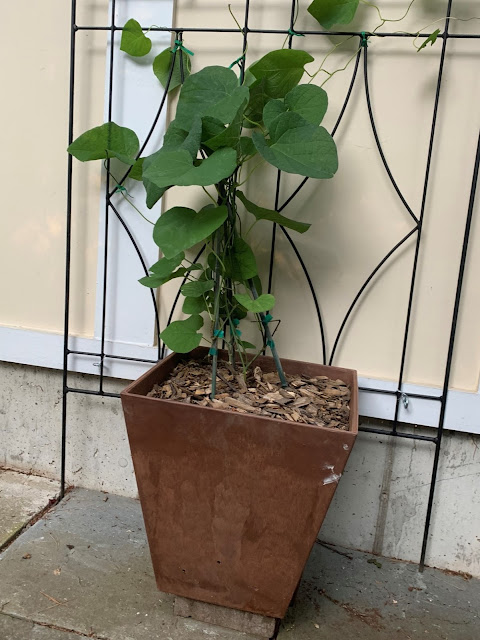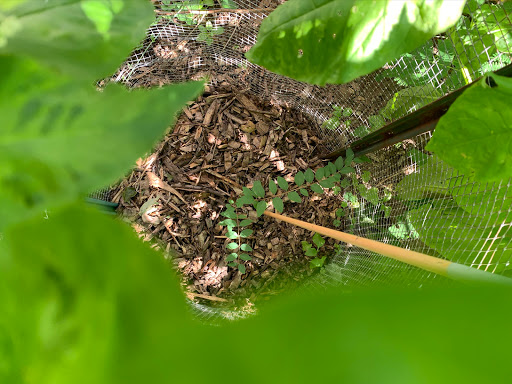Some of the toughest plants in my garden are columbines (Aquilegia spp.). While other plants in a newish bed off the deck have started to turn brown and lose leaves during the current drought, the columbines are holding on.
 |
| Columbines bloom here in May and June |
I appreciate the way these easy growers pop up around the garden wherever there’s open soil. This trait of filling in where they’re needed has been especially convenient in areas where I’m waiting for slower growers to get established.
In the deck bed, I planted a combination of low growers and medium-height mound-formers, aiming for a tapestry of pollinator-attracting plants that would cover the soil densely. That hasn’t happened yet. The bearberry (Arctostaphylos uva-ursi) I hope will eventually form a mat of small shiny leaves is just starting to spread. New native perennials need time to grow wide. While they’re gathering strength, the columbines are helping out.
 |
| Columbines in the deck bed in June |
I have lots of young columbines to choose from. In the vegetable garden alone, each spring reveals a selection of new seedlings. It’s a happy spot for them. The rich soil is renewed annually with compost, and there’s little competition in early spring before food plants have filled the space.
 |
| Columbine volunteer in the vegetable garden |
I can dig up columbines wherever they aren’t needed and move them to where they are. Three have settled in comfortably around those young bearberries.
I started out with a broad selection of columbines, some blue-flowered or blue and white, some rose pink, some deep plum purple. The combinations of traits showing up now reflect interbreeding between these varieties. Columbines aren’t shy about spreading their genes around.
 |
| A later generation |
Since the 1960s, there’s been an effort to categorize plant strategies, the approaches that plant species employ to defend themselves, survive, compete, and reproduce. Columbines have chosen the role of ruderal plants—pioneers in disturbed areas. They sprout where a natural event or human activity creates an opening. They produce lots of seed that drops wherever there’s a favorable place to grow. They grow fast, covering ground quickly. When they’re crowded out by expanding clumps of stronger growers in one area, they move to another. They live short lives, but their offspring take their places so seamlessly that I can’t tell when an older plant dies and a younger takes over.
 |
| New columbines bloom each spring |
Claudia West and Thomas Rainer, in their book Planting in a Post-Wild World, recommend leveraging these plant strategies in designing for visually impactful native plant communities. They divide plants into four categories. In the first group are the taller structural or framework plants, from trees to shrubs to large perennials and ornamental grasses. Second are the seasonal theme plants, such as my rhododendrons (Rhodendron catawbiense), black-eyed Susans (Rudbeckia hirta), and asters (Symphyotrichum spp).
 |
| Native Catawba rhododendron |
Third are groundcover plants such as wild geranium (Geranium spp.), foam flower (Tiarella cordifolia), and barren strawberry (Waldsteinia fragaroides) that control erosion and provide nectar for visiting insects.
 |
| Foam flower |
Last are the filler plants, and that’s where the columbines fit in. They fill the gaps. That’s what I love about them.



























